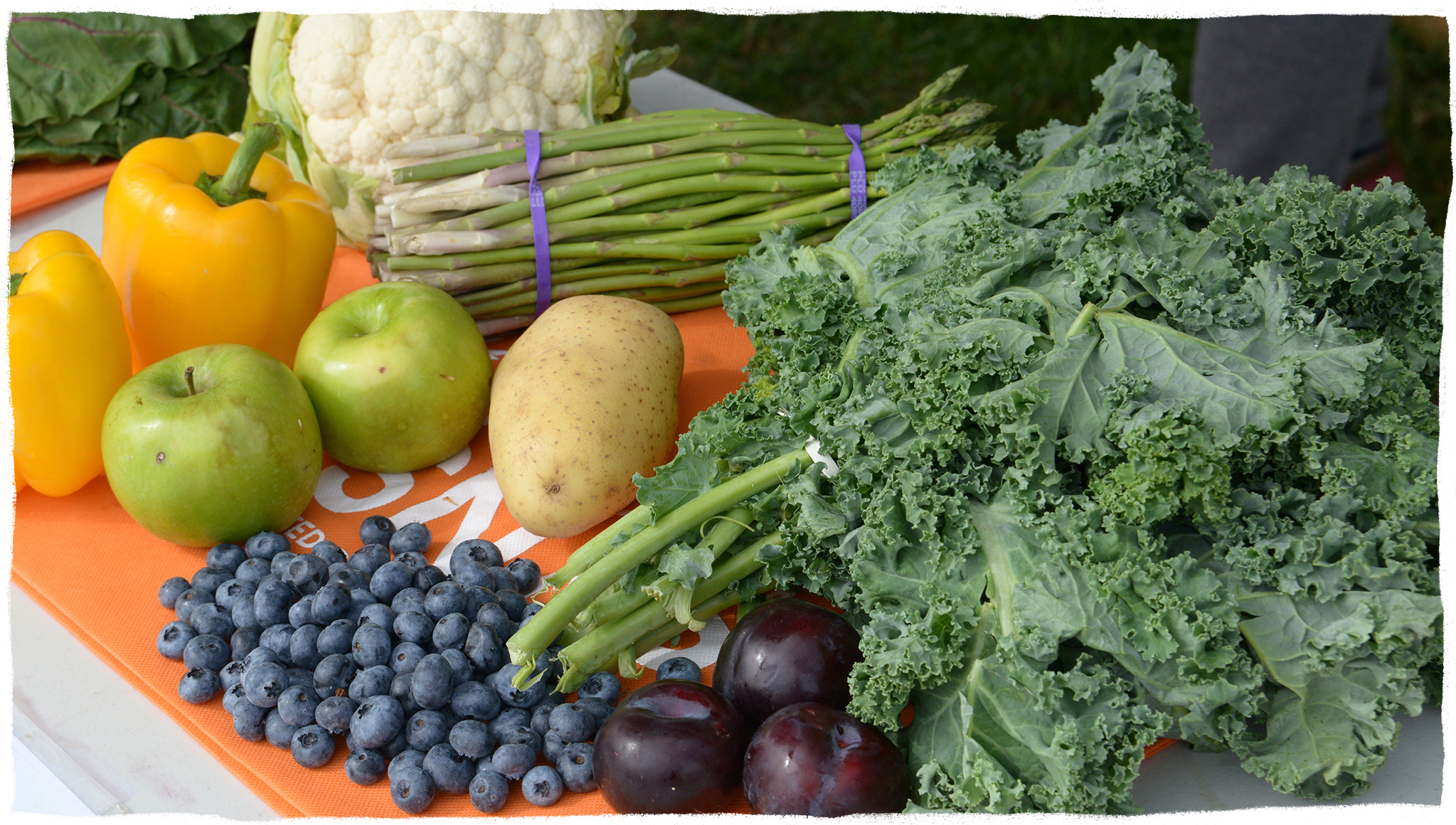Embracing your food memories & the magic of canning
- Laura DeVito, Hungry Harvest
Growing up, I remember spending spring and summers going out with my Mom to pick strawberries, garden fresh cucumbers and tomatoes. Inevitably, out would come the big black pot and in the blur of a few Saturday afternoons we’d have a pantry full of stewed tomatoes, pickles and jam to last us all winter.
For my Mom, it was a way to make sure that everything got eaten and to affordably keep our cupboards stocked. For me, it was like magic how the brightness of summer could be brought back in a single taste on a cold, dreary day in Detroit.
Call it being sentimental or wanting to pass along these traditions and lessons to my own children, but in this time when mindfulness seems to play an important part in every aspect of my life, I find myself compelled to relearn the art of preservation and canning. For starters, I like the idea of knowing exactly what is going into the food we are eating. Canning provides an opportunity to “eat fresh” throughout the year. Plus there is just something hella cool about seeing a shelf full of jars that you filled yourself.
Emily Nichols Grossi teaching the magic.
A few weeks ago, I had the pleasure of taking an intimate class on water bath canning with Emily Nichols Grossi. She is vibrant, extremely knowledgeable and makes a kick-ass jar of peach jam (check out the recipe at the end of this story)!
Inspired by her enthusiasm, I asked her a few questions to help ease the minds of other would-be canners.
What drew you to canning and food preservation?
My grandmother, Nanny, taught me to cook and to preserve. It wasn't until I had little ones at home, though, that I began canning regularly and teaching others.
Cooking was a great way to be creative and feel somewhat accomplished while being a stay-at-home mom, and canning was a way to honor and preserve the seasons. When my boys were little, we spent almost every Sunday at the Dupont farmers market, and invariably I'd come home with loads of stuff that needed quick tending.
I love to teach it because I really enjoy meeting and working with others and also, like pie making, canning is less complicated than people think. I like demystifying the process.
It seems really daunting...what do you absolutely need to start canning?
It is not as complicated as it seems! It is a series of steps aimed at getting fresh fruit to a point of gelation and shelf-stability for long-term, postseason storage. If you follow the steps from good recipes, take good care to keep what needs to be sterile sterile, and keep what needs to be properly sealed properly sealed, you'll be in good shape.
An excellent equipment starter kit would include: a canning pot and rack (ex: Graniteware); a heavy, stainless or enameled-cast iron pot in which to cook the fruit; a ladle and a canning funnel (my vote is for stainless); jars, bands, and lids (Ball, Kerr, etc); a jar lifter; and a wooden spoon.
Recipes vary in terms of time needed, but a few pints of a basic fruit jam can be made start-to-finish in about two hours. For non-sugar sweeteners and non-standard altitudes, look for recipes written specifically for your circumstances.
What are some things to consider when choosing produce to preserve?
Quality and taste in = quality and taste out. Unless you're making fruit butters which cook down for hours, you want to use ripe, but not overly ripe fruit that's in season or that was frozen quickly while it was in season. Fruit jams and jellies should reflect their subject's peak taste, color and aroma.
What brings you the most satisfaction about canning?
I think what I enjoy most about canning is twofold. It's an orderly process and so it’s meditative. I'm sure I wasn't so calm when I was a new canner, but now I can almost do it without thinking, and it's just a lovely, rhythmic exercise. Two, it offers the chance to start and finish a project in one sitting. I've been a stay-at-home mom for nearly thirteen years and finishing projects can often seem like an impossible effort. When the jars seal and share the short chorus of "ping, ping, ping" as the lids vacuum close, it's the greatest feeling of accomplishment. And it means you have delicious stuff to enjoy later!
Are there any important “rules of thumb” to remember when starting out?
• Be patient with yourself
• Don't alter the amounts of fruit or sugar in recipes until you are very skilled
• Wear an apron and put your hair up
• Have everything at the ready, including extra jars
• Pay attention to signs of near-readiness like temperature or the wooden spoon test – over-cooked jam is sub-par in multiple ways
• Read the recipe in total before you start.
What is “the wooden spoon” test?
The "wooden spoon test," is a method of testing whether or not the jam is ready to be ladled into the jars and sealed. This test only works with wooden spoons but is highly accurate – my grandmother taught me the trick.
If, as you cook the jam, you stir it with the spoon and then hold the spoon up over the pot, you can watch the hot fruit "rain" off the back of the spoon. When it rains, your jam has not reached its "set point," the point at which you have jam/gelation versus sauce. If, by contrast, the hot fruit slowly moves down the spoon's back and comes together to drip off as a single drop, your jam is ready. Turn off the heat and ladle away.
Walk us through the four seasons, what are some of your favorite (and easy) fruits and veggies to preserve throughout the year?
Late spring, summer, and early fall are prime times for preserving. Berries, stone fruits, tomatoes, and many fresh herbs are deliciously at peak, and those are my favorite things to can. Little is better than just-picked raspberries cooked down with sugar and some lemon juice. You'll never taste a better raspberry jam.
Putting up quarts of summer tomatoes for use in soups, sauces, and stews during the cold months is a sweaty labor of love but totally worth it. Peaches, plums, rhubarb, strawberries, raspberries, and blackberries are all so sublime. And, if you love pickles, cucumbers are everywhere as are green beans.
As fall and winter take hold, you can make excellent apple chutney, pear preserves, and cranberry sauce...things like that, but I tend not to put up much after early November when I make my annual store of cranberry sauce for personal use and, because it's become so popular, sales to friends.
How can canning and preserving produce help in the fight against food waste?
Canning helps avoid food waste by allowing folks to grow their own or buy larger amounts of produce and have another method to safely save the food for later (most people don't have infinite freezer space).
Any last parting words of advice?
HAVE FUN!
Emily is a Louisiana native now living in the DC-area with her husband and sons. She writes the blog, Em-i-lis: musings from a stay-at-home, cooking-obsessed mom, and is also a cooking instructor, avid gardener, and reader. She also runs Elucido, an editing and writing consultancy.
Peach Pie Jam
Prepare yourself … this tastes exactly like caramelized peach pie filling - yum!
Yield: 3 ¼ pints
Ingredients:
9 - 10 cups peeled, seeded, chopped peaches
3 cups unrefined, granulated sugar
½ teaspoon ground cinnamon
¼ teaspoon freshly ground nutmeg
2 - 3 tablespoons fresh lemon juice
1 -2 tablespoons Cognac
Instructions:
If you’re going to preserve this jam, set up your water bath canner. Get the water boiling and then sterilize whatever jars you want that make up 3 ¼ pints.
In the meantime, in a heavy-bottomed, non-reactive pot set over medium-high heat, put the chopped peaches and sugar. Stir and cook until the sugar is melted, add the cinnamon, nutmeg, and lemon juice, and then turn the heat up to high. When the peaches have started to melt down, use a potato masher to make the consistency an even one.
When the temperature of the jam reaches 215 - 217°F or when the mixture has started to thicken nicely, add the Cognac and stir to incorporate. Let the mixture return to a boil for about 5 - 7 minutes.
When the jam is ready (~215 - 217°F, or use the wooden spoon test), carefully ladle the jam into the jars, bubble them and wipe the rims with a wet towel. Apply the lids and bands and process in the water bath for 12 minutes.
Remove and let sit, undisturbed, until cool. Eat the bit of extra with a spoon or refrigerate until you want to.
More Recommended Hungry Harvest Reads















